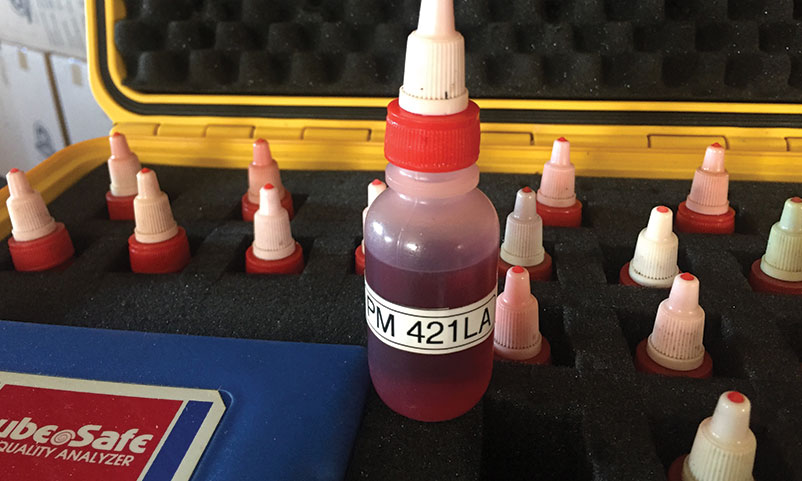Gear Lubricants Specifications – History
Stringent requirements are needed for gear lubricants as they fulfill their many and varied roles across industry. Protection against oxidation, thermal degradation, rust, corrosion and foaming must be provided. Anti-wear additives are needed in some form and degree to counter the wide variety of stresses placed on the lubricant. In addition, the finished lubricant must be formulated to cope with the high and low temperatures that are encountered.
Following is a brief description of some of the specifications used to define the physical and performance characteristics that modern automotive gear oil lubricants are required to have in order to cater for the demands placed upon them.
The Society of Automotive Engineers (SAE) is synonymous within the lubricants industry as the internationally recognised and popularly accepted classification and categorisation system for lubricants, with the SAE J306 Standard being a key specification for automotive gear lubricants. This standard defines the limits for a classification of automotive gear lubricants in rheological terms—i.e. the lubricant’s flow and deformation. It is intended for use by OEMs in defining and recommending automotive gear, axle and manual transmission lubricants. The SAE J306 standard saw major revisions in 1998 and 2005. As industry continues to advance updates were need to adequately define current and future low viscosity fluids. The revision has seen the need for three new low viscosity grades, namely *SAE 65, *SAE 70 and *SAE 75. In addition the *SAE 80 viscosity grade has experienced amendments to reduce the viscosity band that previously existed.
# CEC L-45-T-93 Test Method for Shear Stability requirement was added due to the increasing demand of both wide-span multigrade oils, which may contain significant amounts of polymers along with the trend toward the use of lower grade viscosities. The shear stability requirement ensures the finished lubricant will maintain sufficient oil film thickness to protect componentry against premature wear and other stresses.
Automoative gear lubricant viscosity classifications SAE J306
(Effective February 2019)
SAE | Maximum temperature for |
|
|
|---|---|---|---|
Min | Max |
||
| 70W | -55°C | 3.8 | – |
| 75W | -40°C | 3.8 | – |
| 80W | -26°C | 8.5 | – |
| 85W | -12°C | 11.0 | – |
| 65 | – | 3.8 | <5.0 |
| 70 | – | 5.0 | <6.5 |
| 75 | – | 6.5 | <8.5 |
| 80 | – | 8.5 | <11.0 |
| 85 | – | 11.0 | <13.5 |
| 90 | – | 13.5 | <18.5 |
| 110 | – | 18.5 | <24.0 |
| 140 | – | 24 | <32.5 |
| 190 | – | 32.5 | <41.0 |
| 250 | – | 41.0 | – |
References:
[1] Using ASTM D2983 Standard Test Method for Low-Temperature Viscosity
[2] ASTM D445 Standard Test Method for Kinematic Viscosity
Numerous performance requirements can be cited to identify the level of protection that will be provided by an automotive gear lubricant. Following are further test standards, gear oils must meet to qualify for particular classifications.
API MT-1 API MT-1 which was issued in 1995 designates the type of service characteristics of non-synchronized manual transmissions used in buses and heavy-duty trucks. Lubricants that meet the API MT-1 requirements provide protection against the combination of thermal degradation, component wear and oil seal deterioration not provided by lubricants of API GL-1 through GL-5 quality. This was achieved by developing a single lubricant that combined the cleanliness and oil seal life typical of engine oils with the load carry-capability of gear oils.
MIL-PRF-2105E This specification was released in the nineties and combined the performance requirements of its predecessor MIL-L-2105D and API MT-1. MIL-PRF-2105E maintained all the existing chemical and physical requirements but also added oil seal compatibility and thermal test requirements of MT-1.
SAE J2360 MIL-PRF-2105E has been re-written as SAE J2360. A fluid meeting SAE J2360 will provide equivalent and satisfactory performance in the same applications. A few OEMs still recommend MIL-PRF-2105E, but the majority have transitioned to recommending SAE J2360 or their own specifications, which are often derived from SAE J2360. The re-writing of was essentially to relieve the government of maintaining these specifications. SAE J2360 represents a step up in performance over basic API GL-5 and MT-1 lubricants. SAE J2360 includes all tests required by API GL-5 as a core, but incorporates several additional tests – ASTM D5704 ( relates to new sludge and other deposits). ASTM D5662 ( seal durability test), ASTM D7603 ( storage and compatibility with other J2360 oils. For a lubricant marketer to claim SAE J2360, the formulation along with all required data must be reviewed and approved by the Performance Review Institute (PRI).
API Gear Oil Classifications
GL stands for Gear Lubricant. The following classifications apply.
GL-1 An oil without an EP additive. Operation typical of spiral-bevel and worm gears under mild conditions, where mineral oil suffices.
GL-2 Gear Lubricant that would include fatty materials. Conditions normally associated with worm gears and axles. More severe than GL-1, added anti-wear additives.
GL-3 Gear Lubricant with the presence of a mild EP additive. Service typical of spiral-bevel gears and manual transmissions operating under moderate loads. A mild EP lubricant.
GL-4 Based on MIL-L-2105B with 50% GL-5 EP additive. Conditions typical of hypoid gears calling performance characteristics outlined in MIL-L2105B GL-5.
GL-5 Based on MIL-PRF-2105E. Conditions typical of hypoid gears.
GL-6 Usually associated with limited slip high off-set hypoid gears, under high speed, high performance conditions.
MT-1 For non-synchronised transmissions in buses and trucks with higher performance requirements than GL-4.
MIL-PRF-2105E. Essentially a military specification which combines the former MIL-L2105D and MT-1 with stringent oil seal and thermal durability requirements. Hypoid lubricants would conform to this standard.
J2360 A re-writing of MIL-PRF-2105E with further requirements in meeting the demands placed on gear oils and one which allows for demonstrable quality performance attributes by oil blenders with approved lubricants qualifying for product listing.



0 Comments